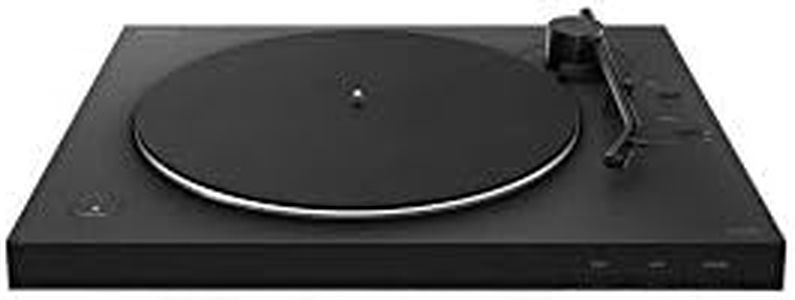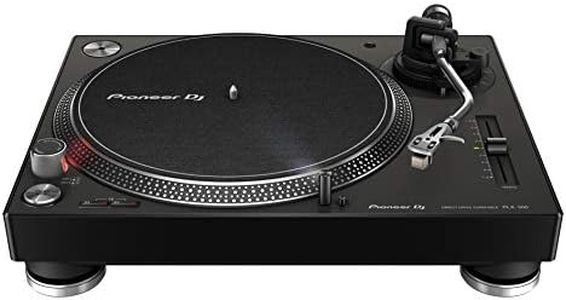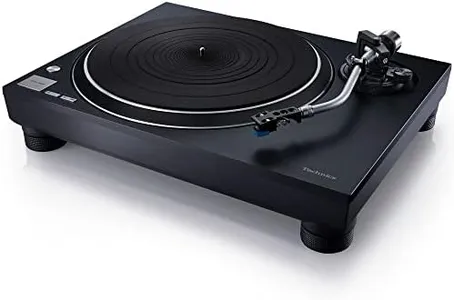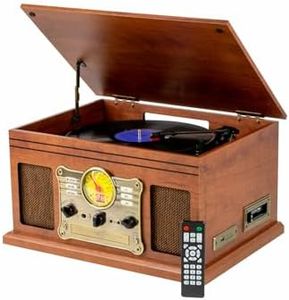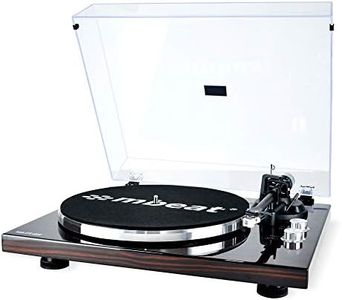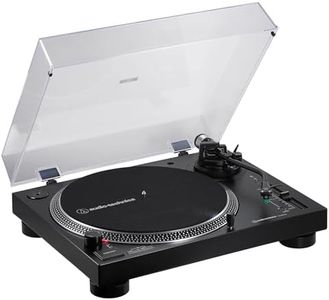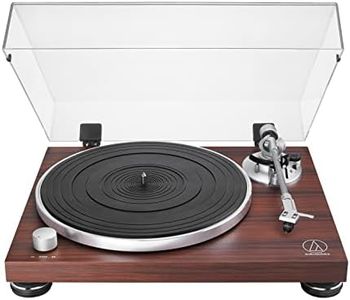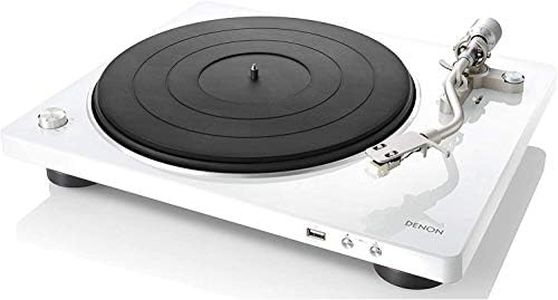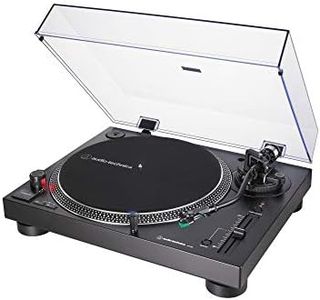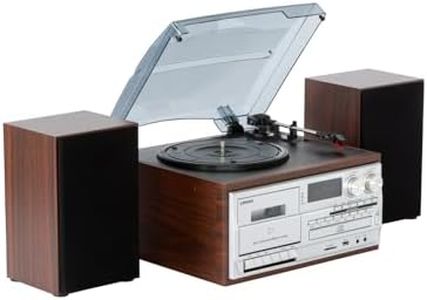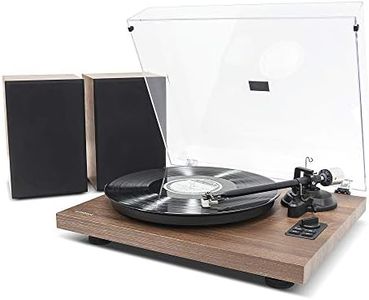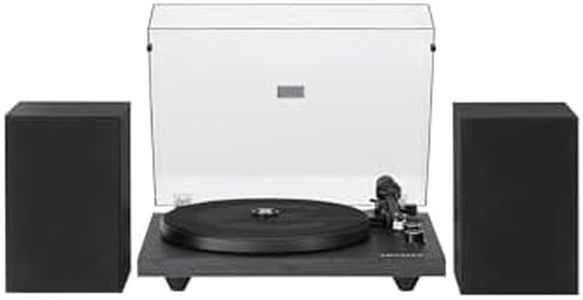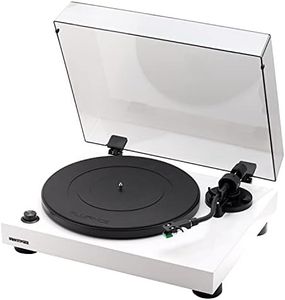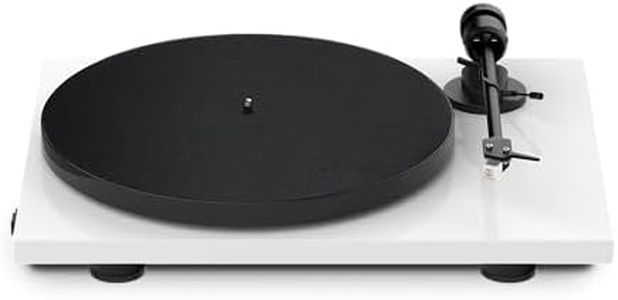We Use CookiesWe use cookies to enhance the security, performance,
functionality and for analytical and promotional activities. By continuing to browse this site you
are agreeing to our privacy policy
10 Best Vinyl Record Players
From leading brands and best sellers available on the web.#7
mbeat
25%OFF
MB-PT-28 Bluetooth Hi-Fi Vinyl Turntable Record Player with 36W Bookshelf Speakers, Supports 33/45 RPM Vinyl Record, Bluetooth Streaming via Smart Devices, Pre-installed Hi Fidelity MMC Stylus, Solid Metal Platter, Removable Dust Cover and Adjustable Counterweight and Anti-skating weight, Including Feature-Rich Audio Outputs, Line-in Pre-amplifier, USB Recording Function
Buying Guide for the Best Vinyl Record Players
Choosing a vinyl record player can be a joyful journey, especially if you appreciate the warmth and character of analog sound. Before you start, think about how you plan to use your player: Are you looking for a simple experience for casual listening, or do you want features that help you get the best possible sound for critical listening? Also, consider if you want to connect your player to external speakers or listen using built-in options. A good understanding of the key features will help you select a vinyl record player that suits your needs and enhances your enjoyment of music.Drive TypeThe drive type refers to how the turntable’s platter is rotated—commonly either by a belt or directly by a motor. Belt-drive models use a rubber belt and often produce less vibration, making them ideal for those who prioritize pure listening quality. Direct-drive models, where the platter is turned directly by the motor, offer quicker startup times and higher torque, so they’re often favored by DJs or those who plan to interact with the record while it plays. If you’re a casual listener who just wants great sound, a belt-drive is usually the way to go. If you’re looking into DJing or want a robust, easy-to-maintain setup, direct-drive may be better.
Manual vs. Automatic OperationThis refers to how you interact with the tonearm—the part that holds the needle. Manual turntables require you to lift and place the tonearm onto the vinyl yourself, while automatic or semi-automatic players do this for you at the push of a button. Manual options offer a more hands-on experience and sometimes better quality, but require more care. Automatic turntables are user-friendly and help prevent accidents that could damage your records or needle. Choose manual if you like the tactile ritual and are comfortable handling vinyl, or go for automatic if convenience and ease are more important.
Cartridge and Stylus TypeThe cartridge and stylus are the parts that make contact with the record and pick up the sound. Some turntables come with pre-installed cartridges, while others require you to buy and install one. There are differences between standard (moving magnet) and higher-end (moving coil) types, with the latter offering improved sound for keen listeners. If you’re just beginning, a standard cartridge will work well and be easy to replace. If you want to explore higher fidelity sound later, choose a player that allows cartridge upgrades.
Built-in PreampA preamp boosts the sound signal from your record player so it can work with speakers and amplifiers. Some turntables include a built-in preamp, making it easy to connect directly to powered speakers or home audio systems, while others require you to buy a separate one. If you’re just starting out or want to avoid extra gear, pick a player with a built-in preamp. If you already have high-quality audio equipment or want to customize your sound system, a turntable without a preamp may be better.
Speeds SupportedTurntables spin vinyl at specific speeds—usually 33 1/3 RPM (for standard albums), 45 RPM (for singles), and less commonly 78 RPM (for old records). Some turntables only play the two more modern formats, while others play all three. Make sure the player covers the speeds for the types of records you plan to use most. For modern music collections, 33 and 45 RPM may be enough. If you have or plan to collect vintage 78 RPM records, ensure your player can handle those too.
Connectivity OptionsConnectivity refers to how you hook up your turntable to speakers or other devices. Common options include RCA cables, USB outputs, or even Bluetooth compatibility. RCA connections are standard for traditional audio setups; USB is useful if you want to digitize your vinyl; Bluetooth provides wireless convenience. Consider where and how you want to listen—if you want plug-and-play convenience, look for RCA outputs and perhaps Bluetooth. If you wish to archive your records digitally, make sure there’s a USB port.
Build Quality and MaterialsThe quality of the build and the materials affects both sound and durability. Heavier platters and solid bases help reduce vibrations and resonance, creating clearer sound. Plastic turntables can be more lightweight and portable, but models with metal or wood can offer better stability and longevity. If listening quality and lasting performance matter to you, opt for a sturdier, well-built turntable. If you need portability or just an entry-level player, lightweight options might suffice.
